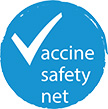
Czy można szczepić kobiety w ciąży?
Podsumowanie
Dlaczego zaleca się szczepienia kobiet w ciąży?
Jakie szczepienia zaleca się w czasie ciąży?
Jakie szczepienia zaleca się kobiecie planującej ciążę?
Jakich szczepionek nie można podawać w czasie ciąży?
Czy możliwe jest przeniesienie szczepionkowego wirusa ospy wietrznej od osoby zaszczepionej na osobę z bliskiego otoczenia?
Co ma zrobić kobieta w ciąży, która miała kontakt z osobą chorą na różyczkę, a nie była szczepiona przeciw tej chorobie, ani na nią nie chorowała?
Po jakim czasie od szczepienia przeciw odrze, śwince i różyczce lub ospie wietrznej można planować zajście w ciążę?
Czy możliwe jest przeniesienie szczepionkowego wirusa ospy wietrznej od osoby zaszczepionej na osobę z bliskiego otoczenia?
Szczepionka przeciw ospie wietrznej zawiera żywego, osłabionego wirusa ospy wietrznej. Jednak możliwość przeniesienia wirusa pochodzącego ze szczepionki na osoby blisko kontaktujące się z zaszczepionym dzieckiem jest wyłącznie teoretyczna. Po szczepieniu bardzo rzadko, u ok. 5-6% zaszczepionych mogą wystąpić objawy niepożądane w postaci wysypki plamistej (niezwykle rzadko ta wysypka przyjmuje postać pęcherzyków ospowych z płynem surowiczym), ale nawet wtedy zakażenie się wirusem ospy wietrznej jest czysto teoretyczne. Nie należy mylić zakażenia od chorego na ospę, który zakaził się wirusem, który krąży w środowisku od sytuacji wyżej opisanej (bardzo rzadkiej), kiedy wystąpi wysypka po szczepieniu, wtedy możliwość przeniesienia zakażenia jest trudna do stwierdzenia ze względu na brak danych.
Ryzyko przeniesienia wirusa szczepionkowego od osób szczepionych u których wystąpiła wysypka pęcherzykowa, na osoby z prawidłową i obniżoną odpornością jest niezwykle rzadkie: na 16 milionów dawek opisano 3 takie przypadki. Jeżeli u osoby zaszczepionej po szczepieniu pojawiłyby się pęcherzykowe wykwity ospowe należy zapobiegawczo zachować ostrożność i ograniczyć jej kontakt z osobą z obniżoną odpornością. Podobnie można szczepić dzieci, których matki są w ciąży. Nie ma udokumentowanego ryzyka przeniesienia zakażenia na matkę od zaszczepionego dziecka.
Zgodnie z zaleceniami można szczepić dzieci kobiet będących w ciąży, a także otoczenie osób z niedoborami odporności.
Co ma zrobić kobieta w ciąży, która miała kontakt z osobą chorą na różyczkę, a nie była szczepiona przeciw tej chorobie, ani na nią nie chorowała?
Zakażenie wirusem różyczki można przejść bezobjawowo. W trybie pilnym należy wykonać badanie krwi na obecność przeciwciał przeciw wirusowi różyczki. Wykrycie przeciwciał w klasie IgG świadczy o przebytej różyczce.
Jeśli kobieta jest w II lub III trymestrze ciąży, nie ma zagrożenia dla dziecka.
Natomiast w I trymestrze takie zagrożenie istnieje (im wcześniejsza ciąża, tym większe ryzyko), dlatego w przypadku nie wykrycia przeciwciał przeciw wirusowi różyczki, zaleca się podanie immunoglobuliny.
- Hisano M, Yamaguchi K. Usefulness of influenza vaccination during pregnancy to mothers and young infants. Expert Review of Vaccines 2012;11:903-5
- Verweij M, Lambach P, Ortiz JR, i in. Maternal immunization: ethical issues. Lancet Infectious Diseases 2016; DOI: 1016/S1473-3099(16)30349-8.
- Fiore AE, Bridges CB, Katz JM, i in. Inactivated influenza vaccines, W: Plotkin S, Orenstein WA, Offit PA red. Vaccines Wyd 6. Elsevier Saunders 2013:257-93.
- Edwards KM, Decker MD. Pertussis vaccines, W: Plotkin S, Orenstein WA, Offit PA red. Vaccines Wyd 6. Elsevier Saunders 2013:447-92.
- Dodds L, McNeil SA, Fell DB, i in. Impact of influenza exposure on rates of hospital admissions and physician visits because of respiratory illness among pregnant women CMAJ 2007;176:463-8.
- Pierce M, Kurinczuk JJ, Spark P, i in. Perinatal outcomes after maternal 2009/H1N1 infection: national cohort study BMJ 2011;342:d3214.
- Steinhoff MC, Omer SB, Roy E, i in. Neonatal outcomes after influenza immunization during pregnancy: a randomized controlled trial. CMAJ 2012;184:645-53.
- Mosby LG, Rasmussen SA, Jamieson DJ. 2009 pandemic influenza A (H1N1) in pregnancy: a systematic review of the literature. Am J Obstet Gynecol 2011;205:10-8
- Mertz D, Kim TH, Johnstone J, i in. Populations at risk for severe or complicated influenza illness: systematic review and metaanalysis. Br Med J 2013;347:f5061.
- Jamieson DJ, Honein MA, Rasmussen SA, i in. H1N1 2009 influenza virus infection during pregnancy in the USA. Lancet 2009;374:451-8.
- ANZIC Influenza Investigators, Webb SA, Pettilä V, Seppelt I, i in. Critical care services and 2009 H1N1 influenza in Australia and New Zealand. N Engl J Med 2009; 361:1925-34.
- Siston AM, Rasmussen SA, Honein MA, i in. Pandemic 2009 influenza A(H1N1) virus illness among pregnant women in the United States. JAMA 2010;303:1517-25.
- Eick AA, Uyeki TM, Klimov A, i in. Maternal influenza vaccination and effect on influenza virus infection in young infants. Arch Pediatr Adolesc Med 2011;165:104- 11.
- Zaman K, Roy E, Arifeen SE, i in Effectiveness of maternal influenza immunization in mothers and infants. N Engl J Med 2008; 359:1555-64.
- Shakib JH, Korgenski K, Presson AP, i in. Influenza in Infants Born to Women Vaccinated During Pregnancy. Pediatrics 2016;137:6.
- Thompson MG, Sokolow LZ, Almendares O, i in. Effectiveness of nonadjuvanted monovalent influenza A(H1N1)pdm09 vaccines for preventing reverse transcription polymerase chain reaction-confirmed pandemic influenza hospitalizations: case-control study of children and adults at 10 US influenza surveillance network sites. Clin Infect Dis 2013;57:1587-92.
- Puleston R, Bugg G, Hoschler K, i in. Multi-centre observational study of transplacental transmission of influenza antibodies following vaccination with AS03(A)-adjuvanted H1N1 2009 vaccine. PLoS One 2013;8:e47448.
- Poehling KA, Vannoy L, Light LS, i in. Assessment of parental report for 2009-2010 seasonal and monovalent H1N1 influenza vaccines among children in the emergency department or hospital. Acad Pediatr 2012;12:36-42.
- Fell DB, Sprague AE, Liu N, i in. H1N1 influenza vaccination during pregnancy and fetal and neonatal outcomes. Am J Public Health. 2012;102:e33-40.
- Håberg SE, Trogstad L, Gunnes N, i in. Risk of fetal death after pandemic influenza virus infection or vaccination. N Engl J Med 2013;24:368:333-40.
- World Health Organization: Influenza vaccines: WHO position paper. Wkly Epidemiol Rec 2005;80:277–88.
- World Health Organization. Vaccines against influenza WHO position paper- November 2012.
- Safety of immunization during pregnancy. A review of the evidence. Global Advisory Committee on Vaccine Safety. WHO, 2014.
- Komunikat Głównego Inspektora Sanitarnego z dnia 4 stycznia 2017 r. w sprawie Programu Szczepień Ochronnych na rok 2017 (Dziennik Urzędowy Ministra Zdrowia Warszawa, dnia 5 stycznia 2017 r., poz. 1).
- Moro PL, Broder K, Zheteyeva Y. i in. Adverse events in pregnant women following administration of trivalent inactivated influenza vaccine and live attenuated influenza vaccine in the Vaccine Adverse Event Reporting System, 1990-2009. Am J Obstet Gynecol 2011;204:146.
- Sheffield JS, Greer LG, Rogers VL, i in. Effect of influenza vaccination in the first trimester of pregnancy. Obstet Gynecol 2012;120:532-7.
- Heikkinen T, Young J, van Beek E, i in. Safety of MF59-adjuvanted A/H1N1 influenza vaccine in pregnancy: a comparative cohort study. Am J Obstet Gyneco. 2012; 207:177.e1-8.
- Launay O, Krivine A, Charlier C, i in. Low rate of pandemic A/H1N1 2009 influenza infection and lack of severe complication of vaccination in pregnant women: a prospective cohort study. PLoS One. 2012;7(12):e52303.
- Pasternak B, Svanström H, Mølgaard-Nielsen D, i in. Vaccination against pandemic A/H1N1 2009 influenza in pregnancy and risk of fetal death: cohort study in Denmark. BMJ 2012;344:e2794.
- Sammon CJ, Snowball J, McGrogan A, i in. Evaluating the hazard of foetal death following H1N1 influenza vaccination; a population based cohort study in the UK GPRD. PLoS One. 2012 Dec 20;7(12):e51734.
- Källén B, Olausson PO. Vaccination against H1N1 influenza with Pandemrix during pregnancy and delivery outcome: a Swedish register study. 2012; 119:1583-90.
- Naleway AL,Kurosky S, Henninger ML, i in. Vaccinations Given During Pregnancy, 2002–2009: A Descriptive Study. Am J Prev Med 2014;46:150-7.
- Eppesa C, Wua A, Youb W, i in. Barriers to influenza vaccination among pregnant women. Vaccine 2013; 31:2874-8.
- Kennedy ED, Ahluwalia IB, Ding H, i in. Monitoring seasonal influenza vaccination coverage among pregnant women in the United States. Am J Obstet Gynecol. 2012; 207:S9-16.
- Ding H, Santibanez TA, Jamieson DJ, i in. Influenza vaccination coverage among pregnant women-National 2009 H1N1 Flu Survey (NHFS) Am J Obstet Gynecol 2011; 204(6S1);96-106.
- Laenen J, Roelants M, Devlieger R, i in. Influenza and pertussis vaccination coverage in pregnant women. Vaccine 2015; 27;33:2125-31.
- Amirthalingam G, Andrews N, Campbell H, i in. Effectiveness of maternal pertussis vaccination in England: an observational study. Lancet 2014,384,1521-28.
- Elliott E, McIntyre P, Ridley G. i in. National study of infants hospitalized with pertussis in the acellular vaccine era. Pediatr Infect Dis J 2004;23:246-52.
- Halperin BA, Morris A, Mackinnon-Cameron D, i in. Kinetics of the antibody response to tetanus-diphtheria-acellular pertussis vaccine in women of childbearing age and postpartum women. Clin Infect Dis. 2011;53:885-92.
- Gall SA, Myers J, Pichichero M. Maternal immunization with tetanus-diphtheria-pertussis vaccine: effect on maternal and neonatal serum antibody levels. Am J Obstet Gynecol. 2011;204:334.e1-5.
- Zheteyeva YA, Moro PL, Tepper NK, i in. Adverse event reports after tetanus toxoid, reduced diphtheria toxoid, and acellular pertussis vaccines in pregnant women. Am J Obstet Gynecol 2012;207(59)e1-7.
- van Rie A, Wendelboe AM, Englund JA. Role of maternal pertussis antibodies in infants. Pediatr Infect Dis J 2005;24:S62–5.
- Healy CM, Rench MA, Baker CJ. Importance of timing of maternal Tdap immunization and protection of young infants. Clin Infect Dis 2013;56:539-44.
- Shakib JH, Korgenski K, Sheng X, i in. Tetanus, Diphteria, Acellular pertussis vaccaine during pregnancy: pregnancy and infant health outcomes. J Pediatr 2013; 163:1422-6.
- Amirthalingam G, Gupta S, Campbell H. Pertussis immunization and control in England and Wales, 1957 to 2012: a historical review. Euro Surveill. 2013;18:1-9.
- Kharbanda EO, Vazquez-Benitez G, Lipkind HS, i in. Maternal Tdap vaccination: coverage and acute safety outcomes in the vaccine safety datalink, 2007-2013. Vaccine 2016;34:968-73.
- Winter K., Cherry JD, Harrman K. Effectiveness of prenatal Tdap vaccination on pertussis severity in infants. Clin Infect Dis 2016 Sep 13. pii: ciw633.
- Centers for Disease Control and Prevention (CDC): Updated recommendations for use of tetanus toxoid, reduced diphtheria toxoid and acellular pertussis vaccine (Tdap) in pregnant women and persons who have or anticipate having close contact with an infant aged <12 months – Advisory Committee on Immunization Practices (ACIP), 2011. MMWR Morb Mortal Wkly Rep 2011;60:1424-6.
- Sukumaran L, McCarthy NL, Kharbanda EO, i in. Association of Tdap vaccination with acute events and adverse birth outcomes among pregnant women with prior tetanus-containing immunizations JAMA 2015;314:1581-7.
- Donegan K, King B, Bryan P. Safety of pertussis vaccination in pregnant women in UK: observational study. BMJ. 2014;349:g4219:1-6.
- Donaldson B, Jain P, Holder BS, i in. What determines uptake of pertussis vaccine in pregnancy? A cross sectional survey in an ethnically diverse population of pregnant women in London. Vaccine 2015;33:5822-8.












